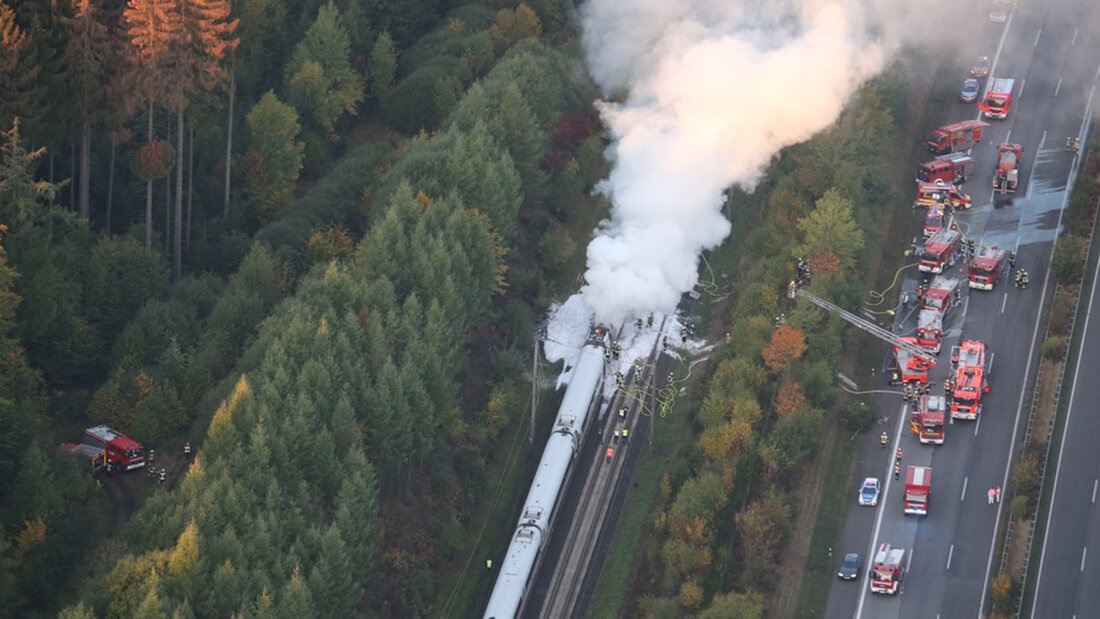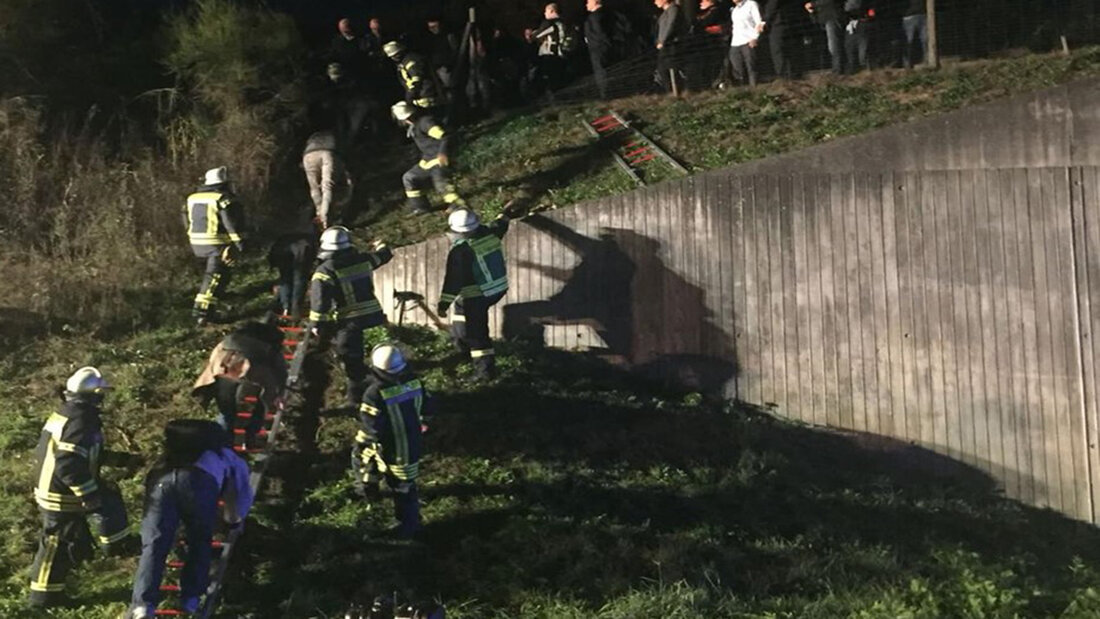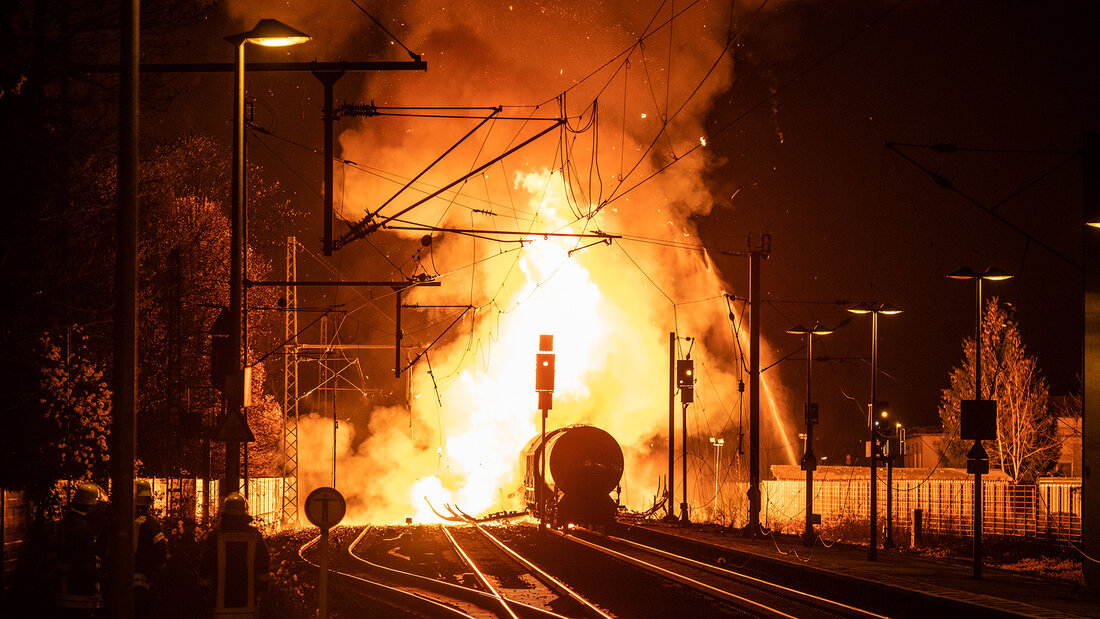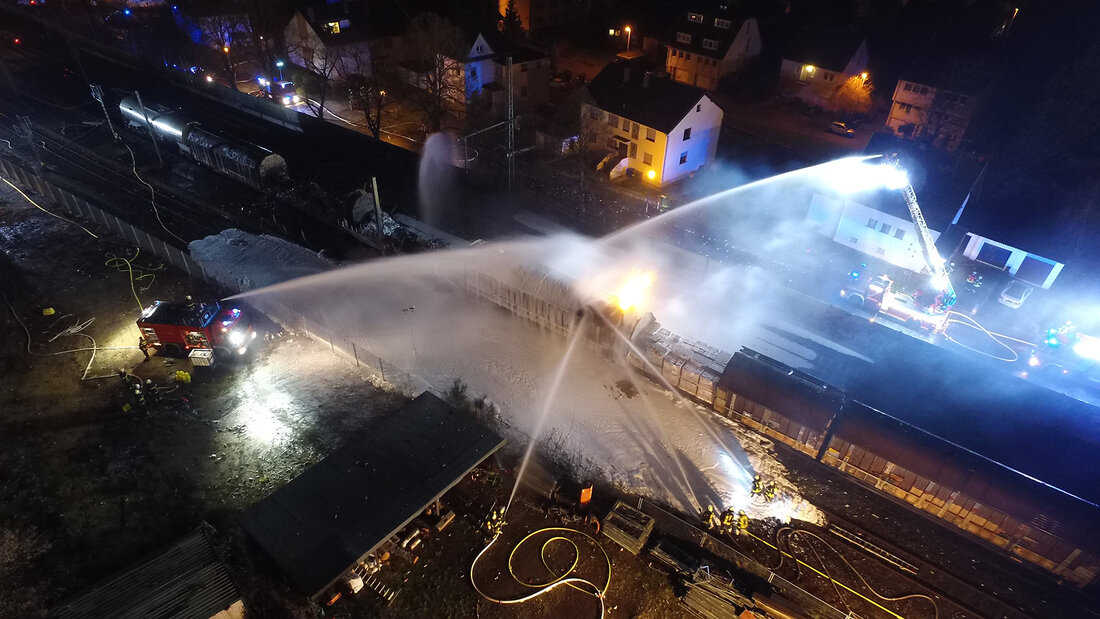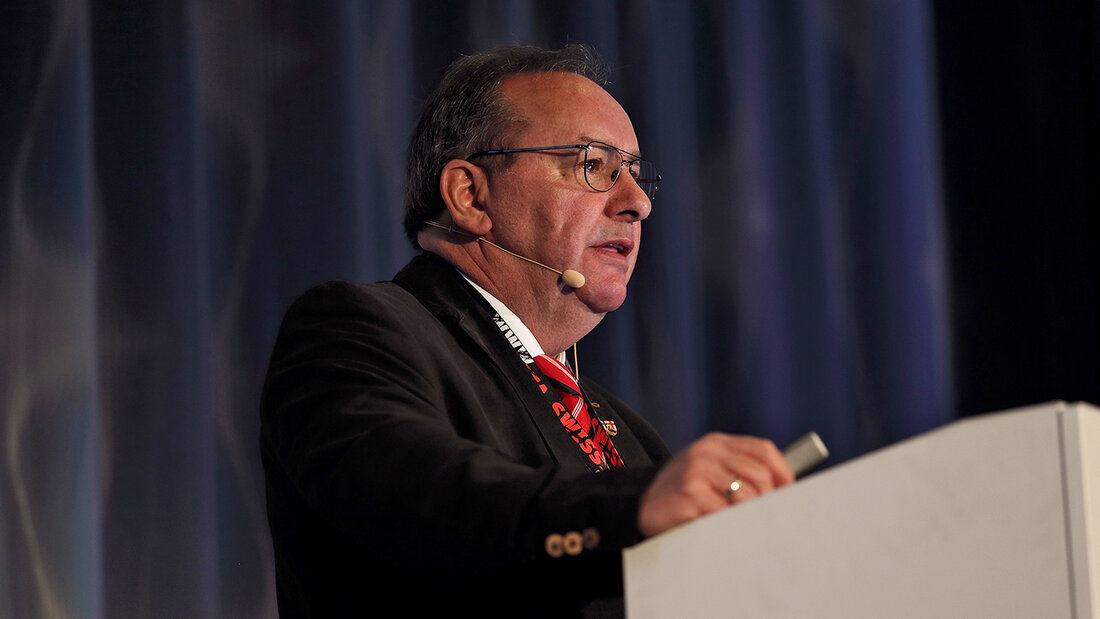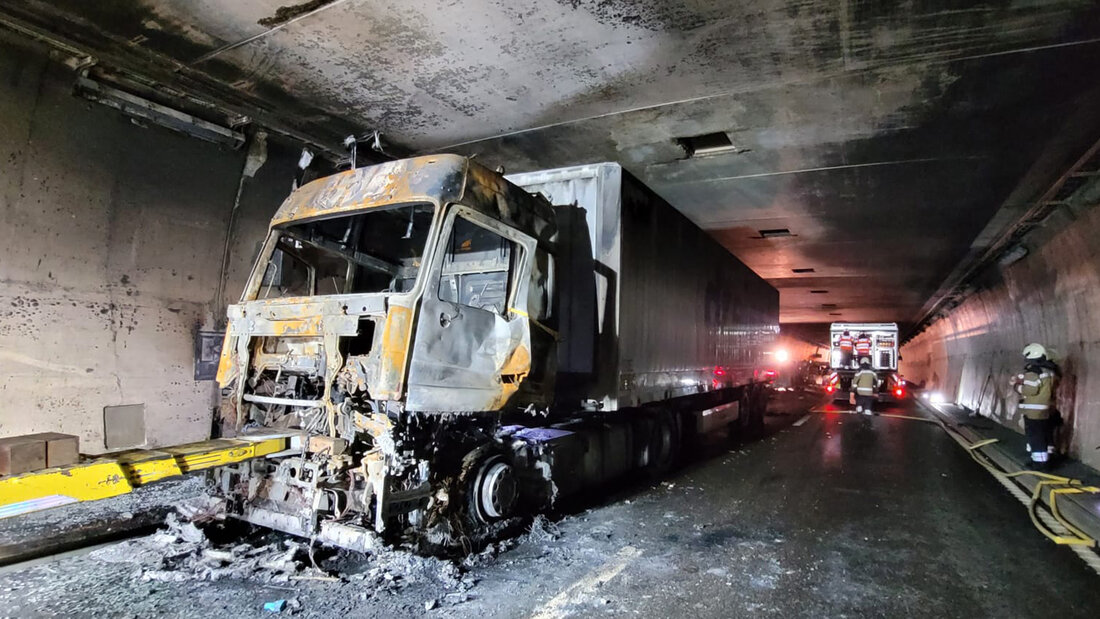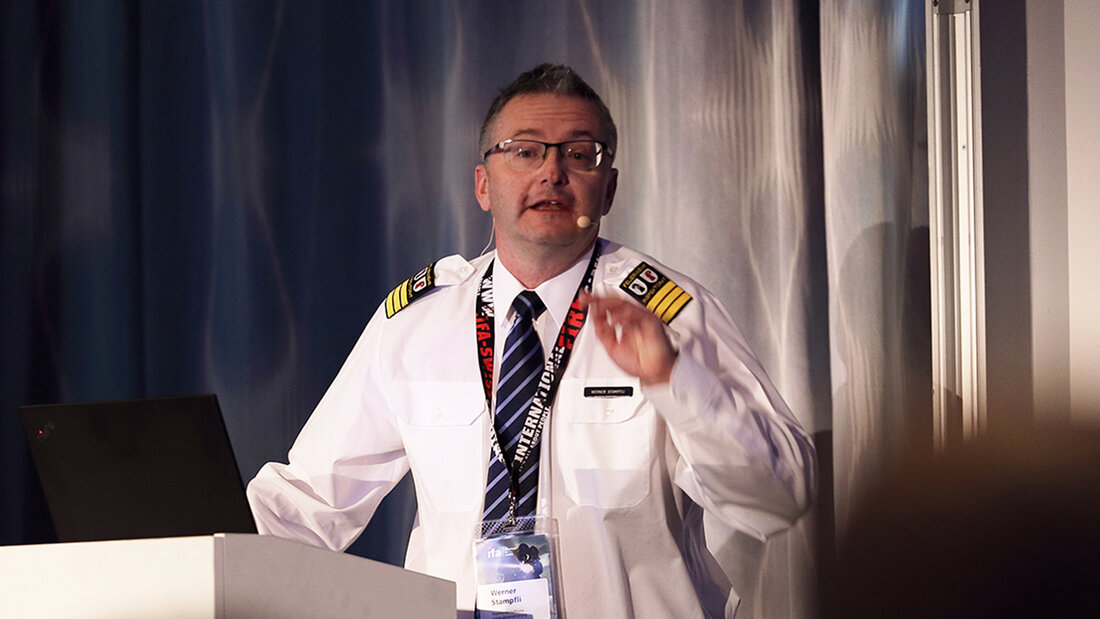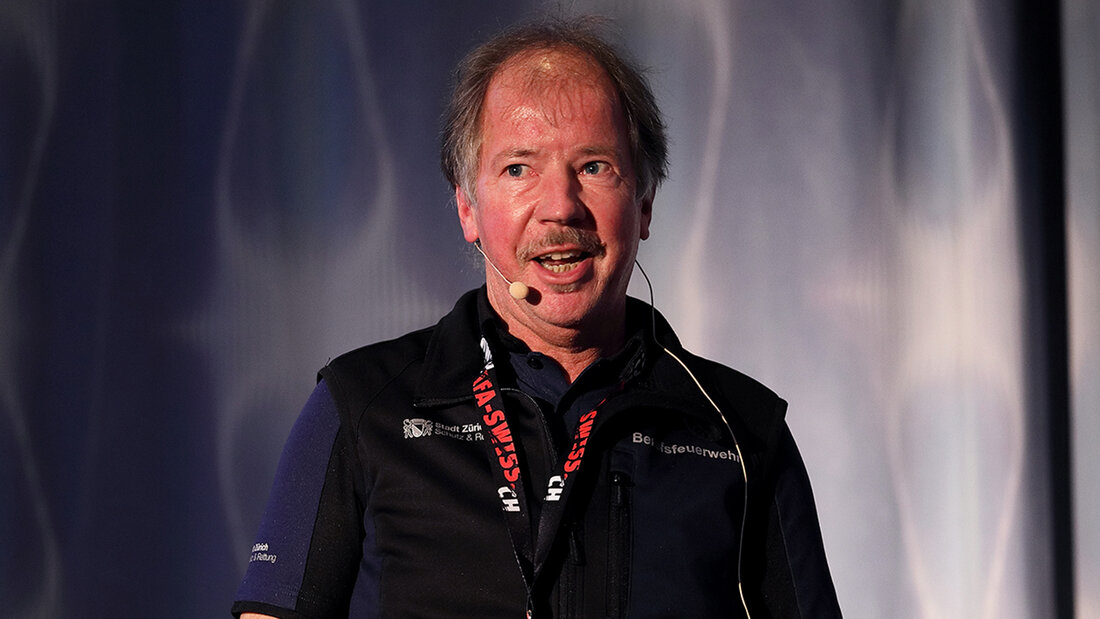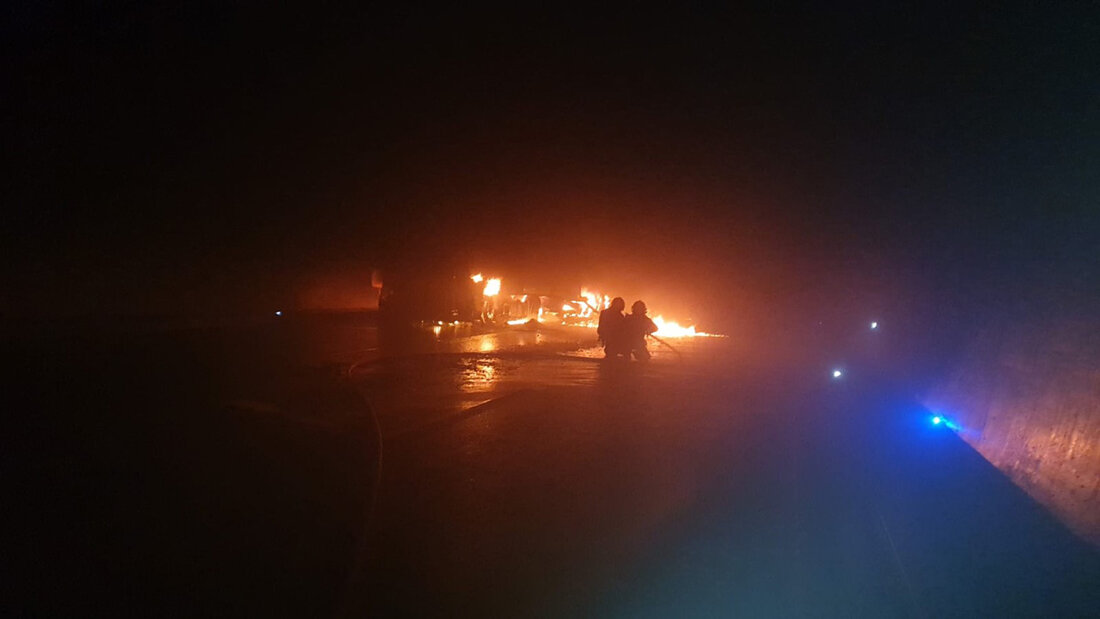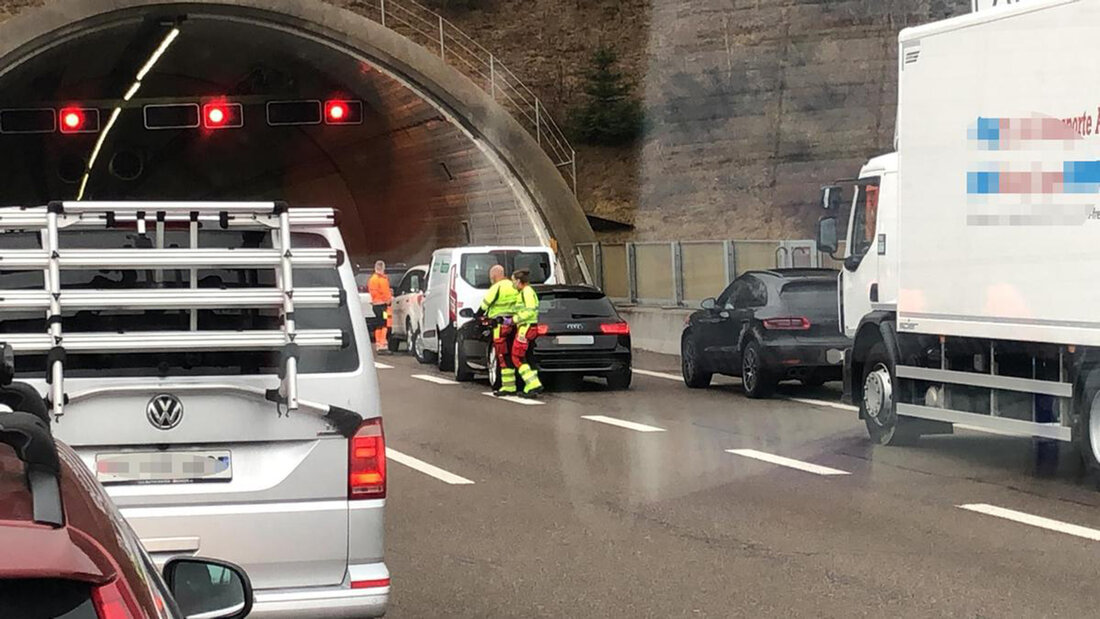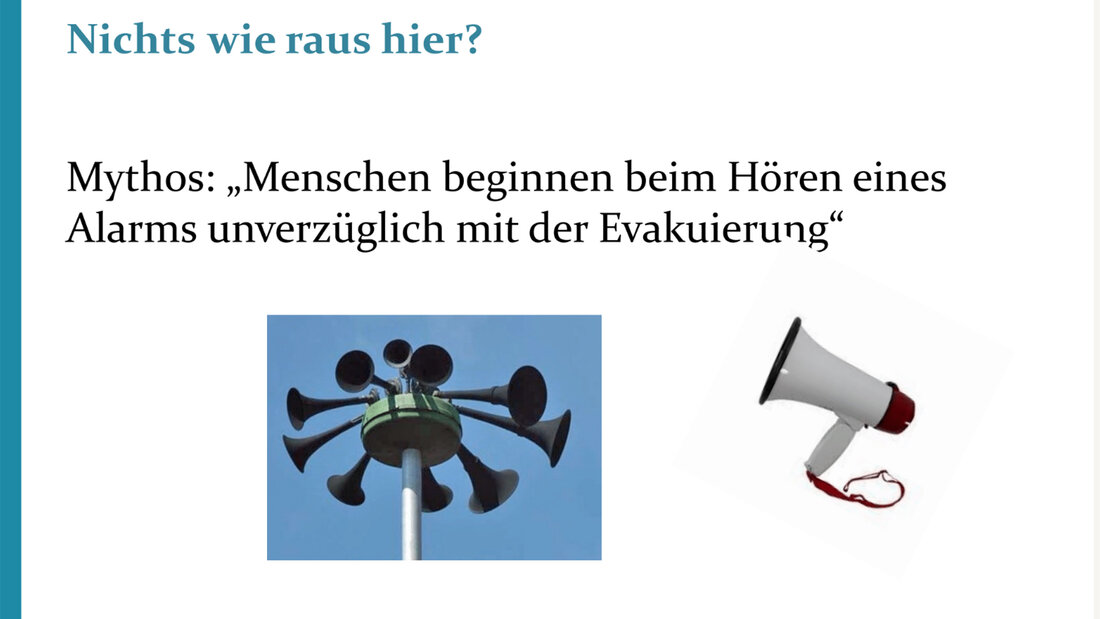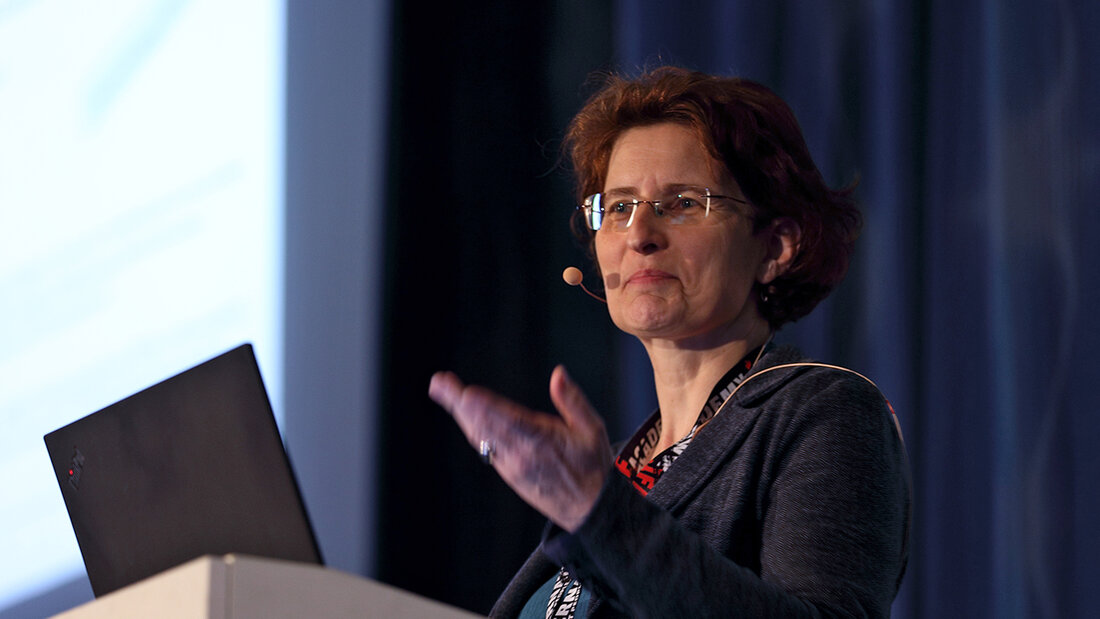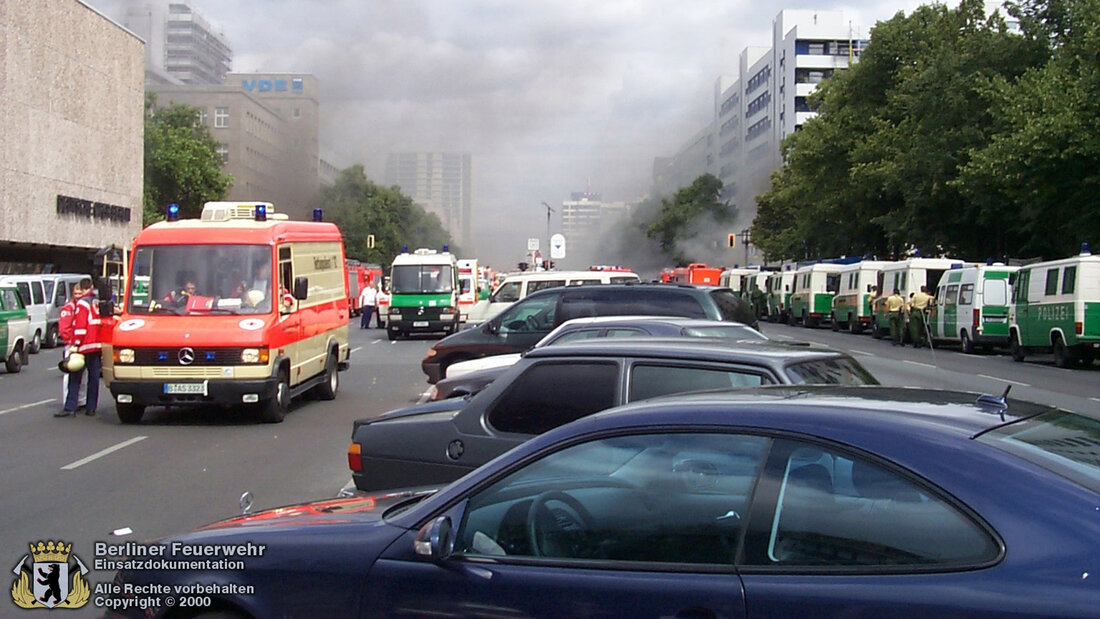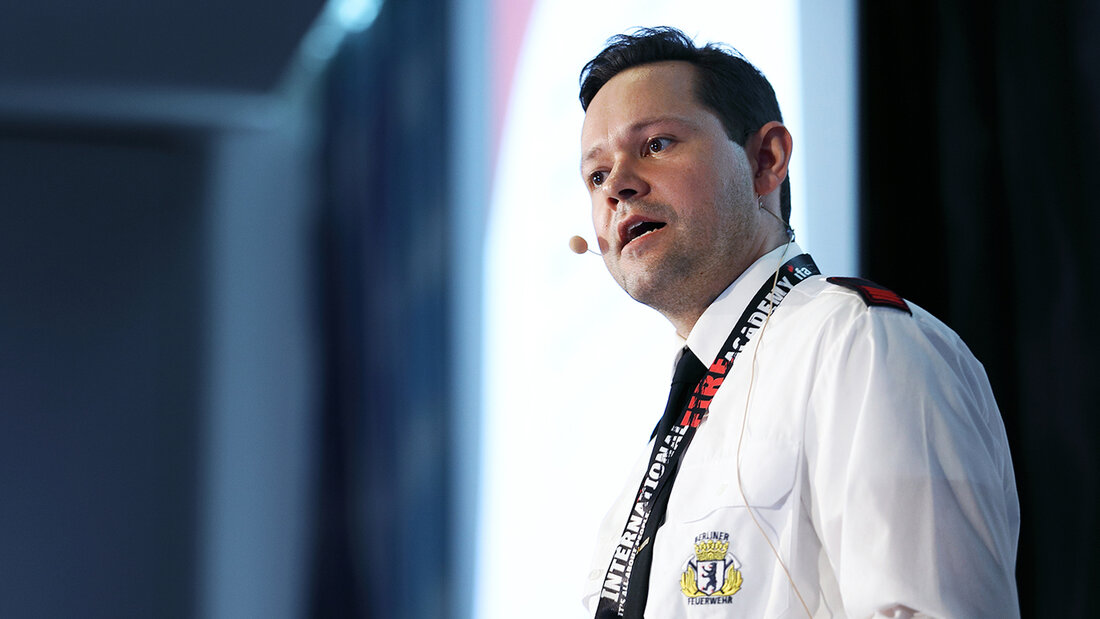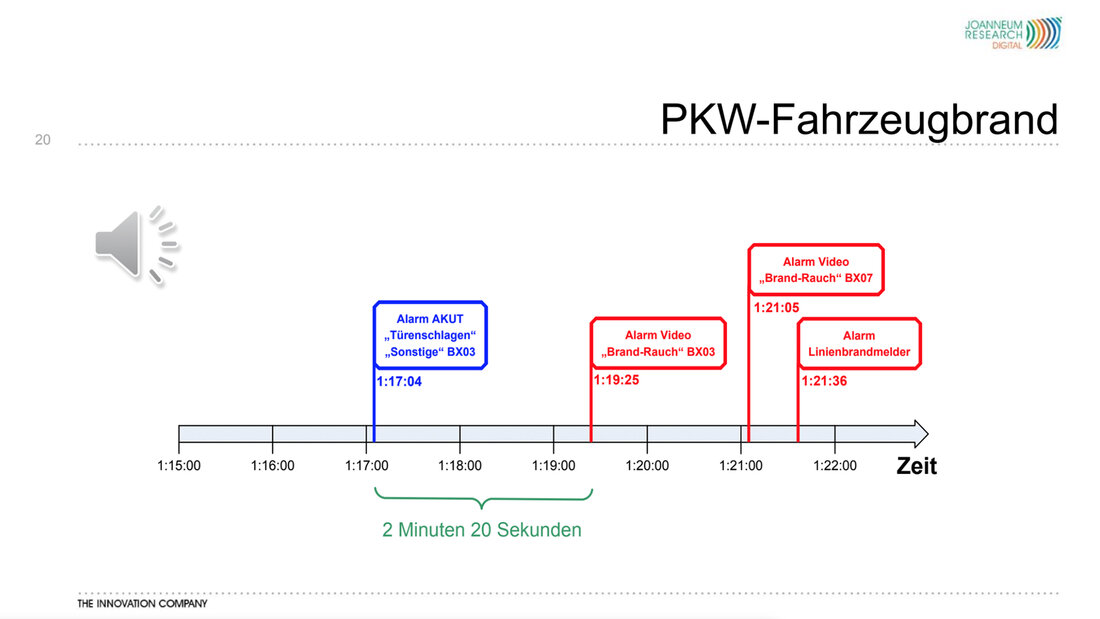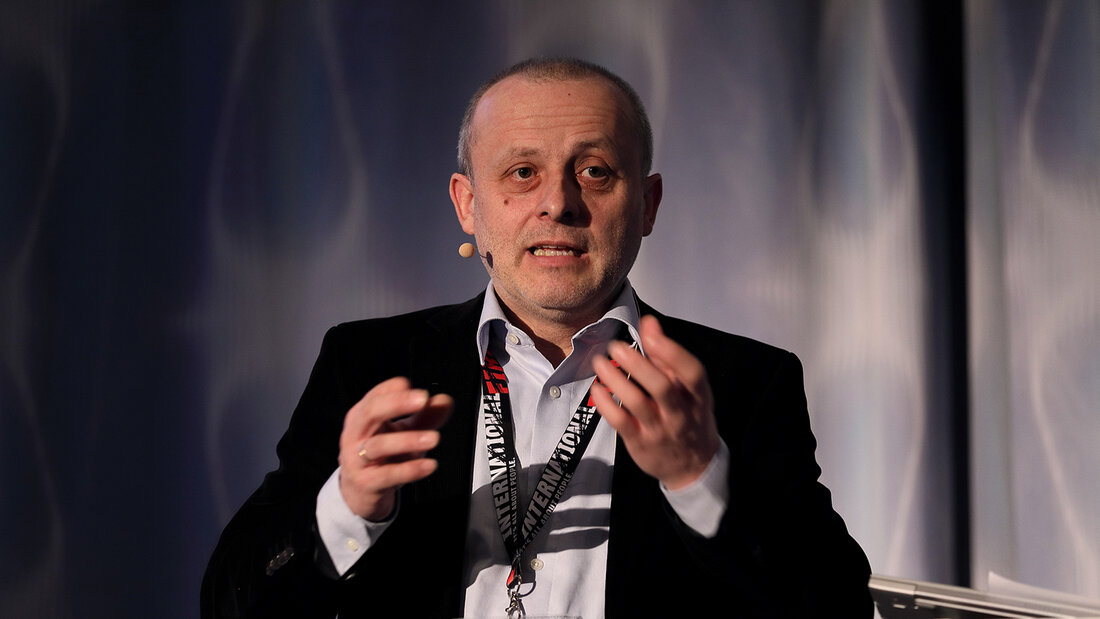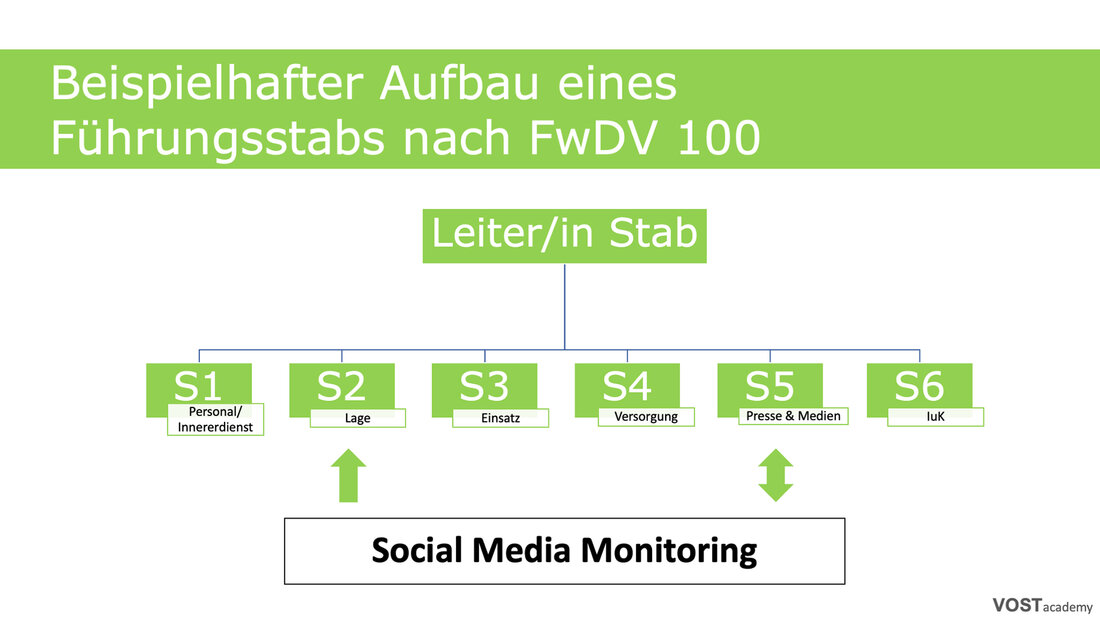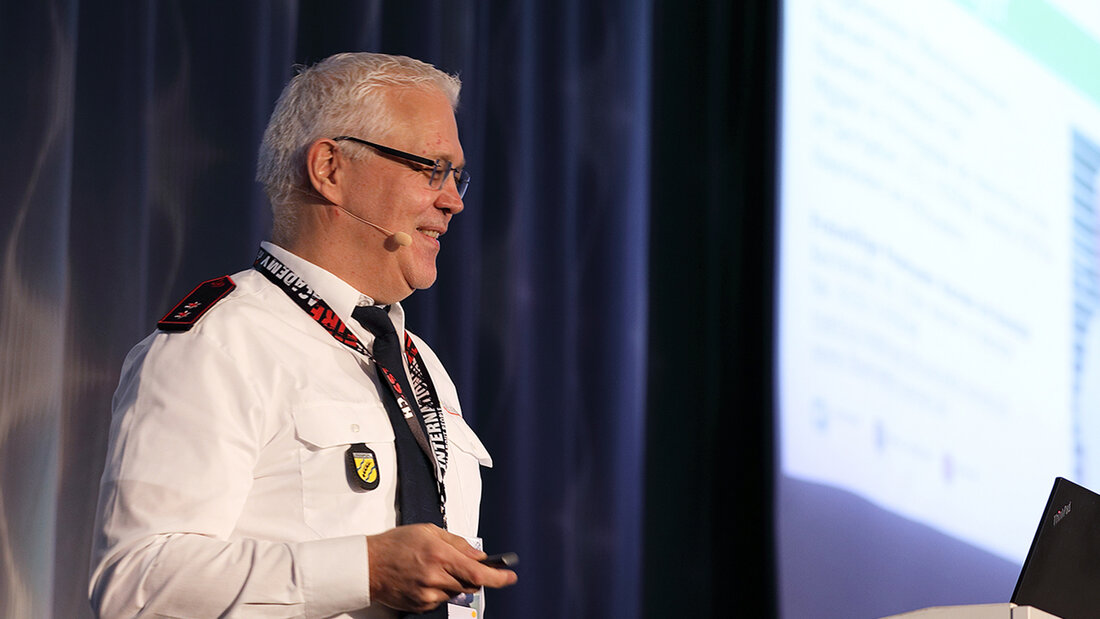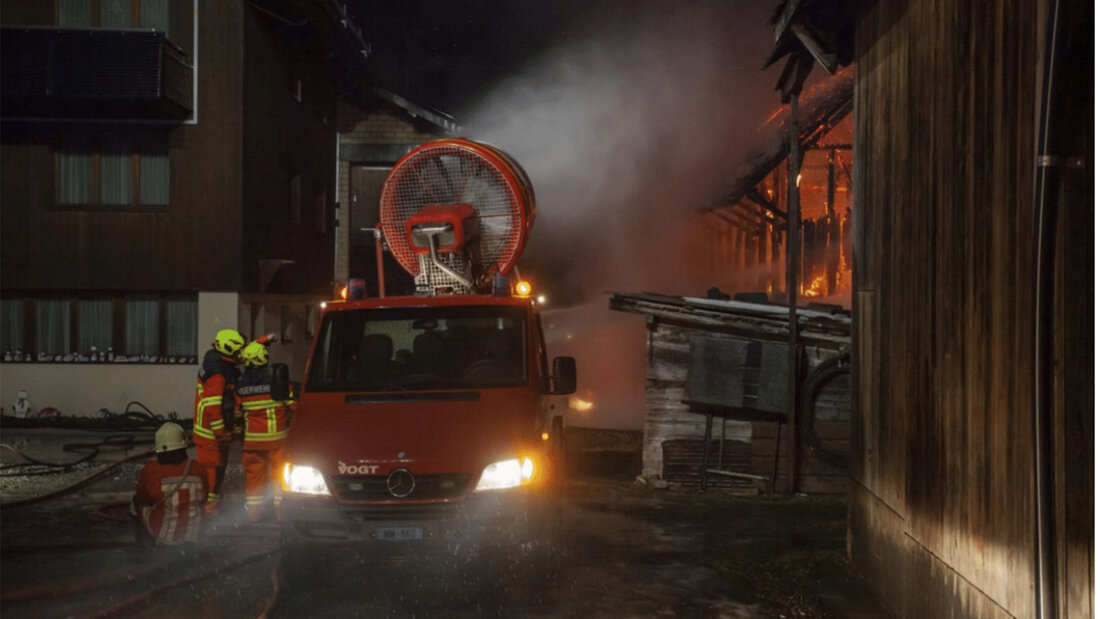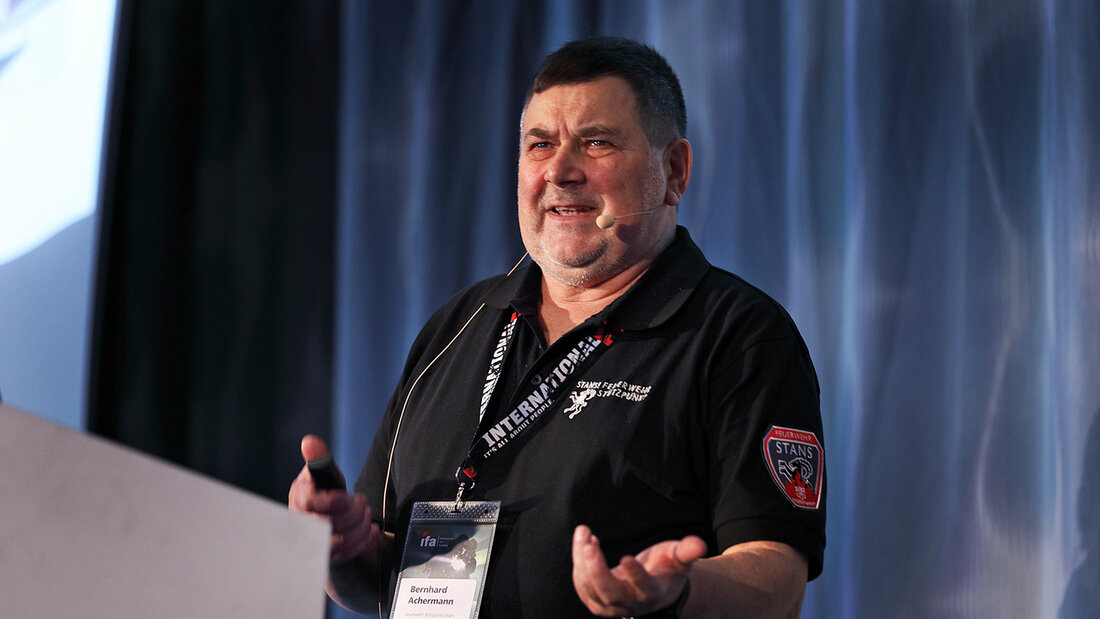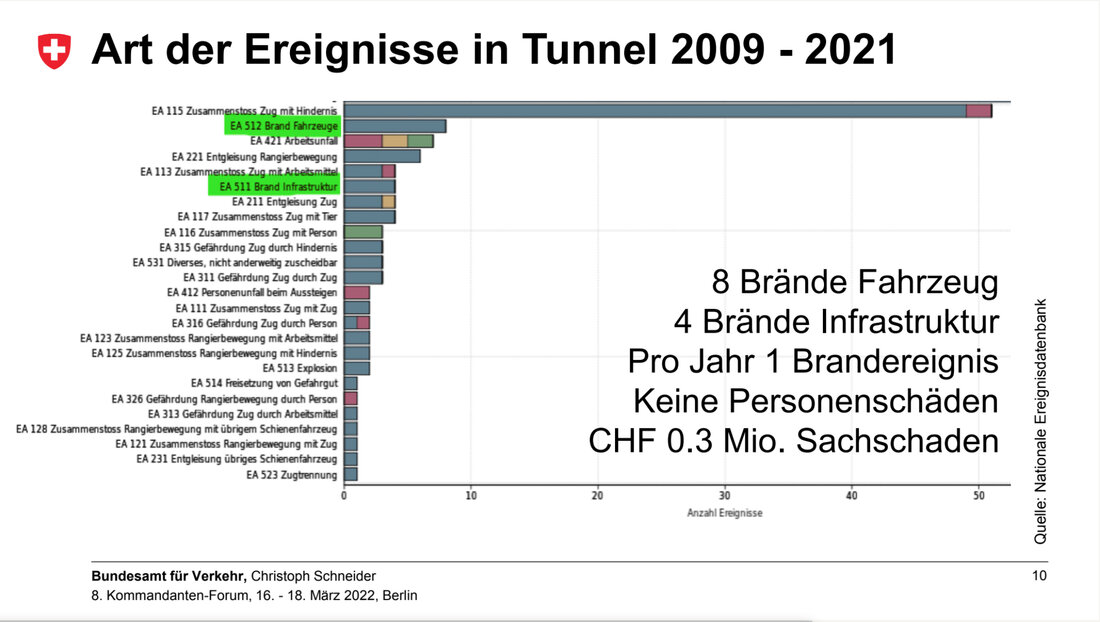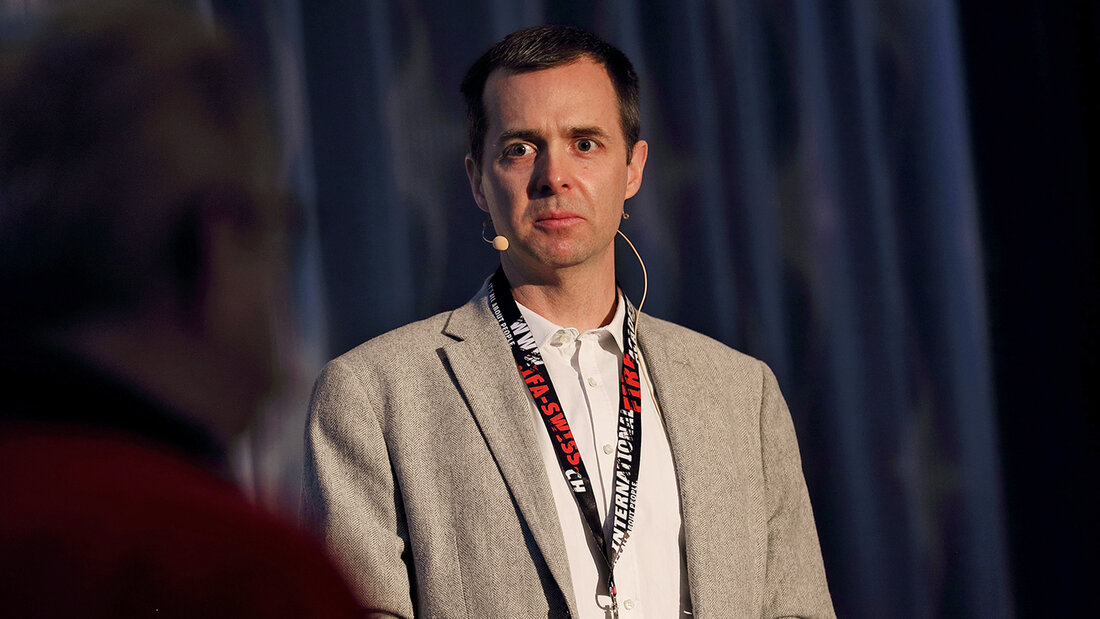The 8th Fire Chief Forum placed emphasis on incident reports and covered a broad spectrum: two lorry fires in road tunnels, an underground metro fire, and two train fires, one on open track and the other one within a settlement. Social media and the usage of large mobile fans in deployments were two other topics from the practical side of firefighting operations. Looking beyond the world of fire services, the focus was on the behaviour of those caught up in an evacuation as well as special aspects of tunnel safety.
Operations as a touchstone and basis for development
«For the fire services, operations have a similar function as experiments have for science.» With this analogy, Urs Kummer, CEO of the International Fire Academy, opened the programme of the Fire Chief Forum in Berlin. Operations, he explained, can be used much like experiments to test assumptions and identify new patterns.
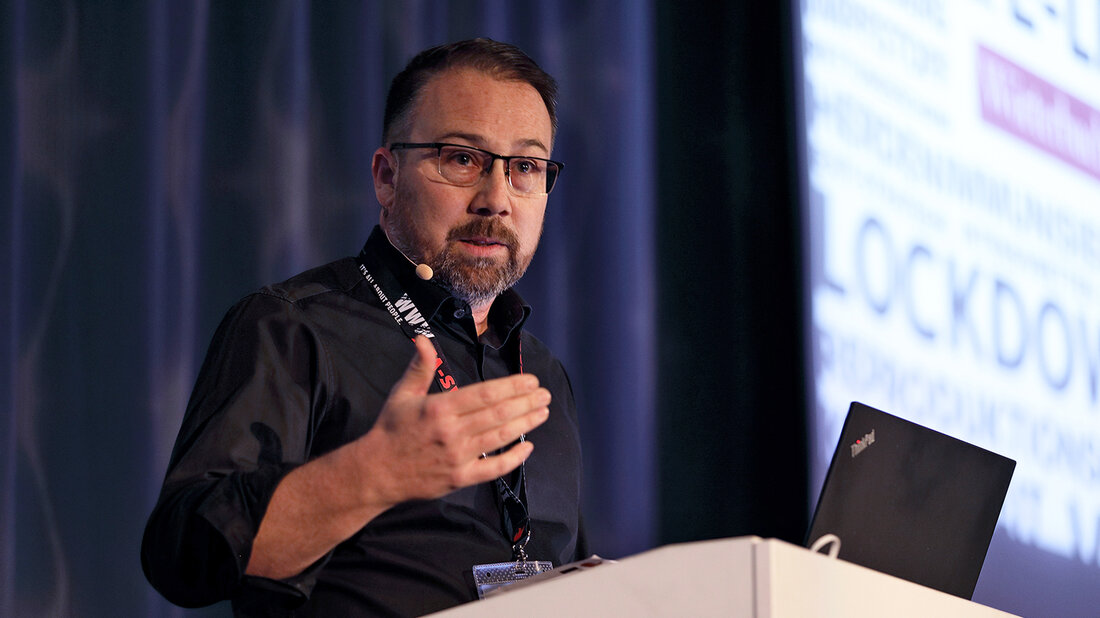
A prerequisite for gaining new insights for operations in underground transport systems is a critical reflection of incidents, whereby problems and unexpected difficulties are openly addressed. The Fire Chief Forum offers a protected space for this; only in this way can it contribute to the (further) development of tactical principles and practical operational techniques. The event in Berlin provided several points of evidence for this, a selection of which is presented below.
From a standard operation to a major fire within minutes
Fire service inspector (ret.) D. Werner Böcking, of the fire service and disaster control of the Neuwied district (D), reported on the fire of an ICE on 12 October 2018 on the Cologne/Rhine-Main high-speed line and on the fire of several freight wagons on 6 February 2019 in Unkel on the Middle Rhine (D). Both operations confirmed several assumptions, such as: During railway incidents, difficult access to the train must be expected - even within built-up areas (noise protection wall). A large number of firefighters are needed - in the case of the ICE fire, there were 210 firefighters and 66 medical personnel, in the case of the freight wagon fire, there were 160 firefighters. The extinguishing attack can only be started well after the fire services have arrived due to the required initial grounding of the overhead line by a railway emergency manager.
The fire of the freight wagons in Unkel near Bonn developed from a standard operation to a major fire with a high heat exposure for the emergency services within a few minutes. Six of the 14 wagons were loaded with a total of 52 tonnes of hair and body care products on 143 pallets - including many spray cans, some of which exploded. It turned out that not every quantity of dangerous goods has to be labelled as dangerous goods transport - which can cause surprises on scene.
Technology can miss the intended effect
Werner Stampfli, Head of the Fire Service Inspectorate of both cantons Basel-Landschaft and Basel-Stadt (CH), and Jan Bauke, Head of Training of the Zurich Fire Service (CH), each reported on a lorry fire. The comparison confirmed the importance of the two-sided attack: In the Belchen Tunnel southeast of Basel, it worked «perfectly» with the desired effect. On the contrary, during the operation in the Aescher Tunnel (part of the western bypass of Zurich), a complicated situation arose because the second fire service was deployed with a delay, and the two-sided attack could not be carried out as planned.
The assumption that a ventilated tunnel always has an upstream and a downstream side was contradicted by the experience of the lorry fire in the Aescher Tunnel: There, the firefighters encountered two downstream sides due to a defective fire shut-off hatch. Jan Bauke derived from this the recommendation to expect the falling of tunnel installations and train worst-case situations with «zero visibility» and great thermal strains for the firefighters.
The behaviour of tunnel users proved to be another issue in both incidents: The traffic lights switched to red at the entrance to the Aescher Tunnel were ignored by many motorists, resulting in traffic chaos. In the Belchen Tunnel, it was observed that people in the tunnel did not immediately seek safety despite the danger posed by the lorry fire. Therefore, a directive for all tunnel users was formulated: «In case of fire in the tunnel, get out of the tunnel! - When there is a red light in front of the tunnel, do not enter the tunnel!»
People often behave differently than expected during an evacuation
Gesine Hofinger from Team HF - Human Factors Research, Consulting, Training in Ludwigsburg (D), added to the experiences from the incident reports and contrasted assumptions about the behaviour of those affected during an evacuation with the findings from her team's research work. She confirmed that people often have a delayed reaction to an alarm and explained why they flee despite the danger through the smoke. He said that mass panic during an evacuation is relatively unlikely unless there are additional obstacles.
In order to meet the need for the safety of those affected during an evacuation, Gesine Hofinger advised firefighters to provide information and clear instructions for action as well as to lead perceptibly, thus building trust. Overall, the communication should convey a feeling of security. (The background to their recommendations and further findings from Team HF's research are explained in a separate magazine article).
Retrospective of the fire in the Deutsche Oper underground station
Dominik Pretz, Hauptbrandmeister, Berlin Fire Service (D), was among the first responders to enter the Deutsche Oper underground station in Berlin on 8 July 2000. At this point, there was already heavy smoke coming from all access ways to the station, so evacuation of several 100 people was no longer possible via the designated routes. Dominik Pretz confirmed Gesine Hofinger's remarks that there was no panic during the fire of the underground car but that people were calm and responsive. They followed the instructions of the firefighters.
Critical situations could have arisen during the evacuation, for example, if someone had stepped on the high-voltage conductor rail next to the tracks. Therefore, the firefighters not only had to lead the way but also make sure that no one made a mistake. The report provided a vivid impression of how many decisions the first responders in the underground station had to make within a short time and how they felt about it.
Perceive incidents acoustically faster
In addition to the human factor, another focus of the Fire Chief Forum was on the support provided by technology during operations in underground transport systems. Franz Graf, Research Group Leader, Joanneum Research Association (A), presented the acoustic tunnel monitoring system AKUT. This system is based on the assumption that incidents in a road tunnel can be detected at an early stage through «abnormal» sounds. These include horns, squealing tyres, slamming car doors, tyre blowouts, collision sounds and human voices. Studies show that AKUT can detect them in real-time. By linking the system to the CCTV system, the staff at the operations centre can be provided with the relevant images in less than a second.
A long-term analysis over eight months was carried out in 37 kilometres of tunnel with 400 microphones. During this period, 19 relevant incidents occurred, all of which, according to Franz Graf, were detected by AKUT - and faster than by any other safety system. Two incidents were indicated exclusively by AKUT. The time saved for a quick response ranged from seconds to several minutes.
In Austria, 30 tunnels have been equipped with acoustic monitoring so far, and 26 more have been commissioned. (A more detailed magazine article on this topic will follow).
Decentralised social media analysis for command work
Monitoring was also the topic of Markus Medinger, Head of Department, Virtual Operations Support Team Baden-Württemberg (VOSTbw) (D). For monitoring social media posts during major events, he argued that «Only people can evaluate content and determine its relevance». This requires experience in dealing with the many channels of social media as well as with evaluation tools.
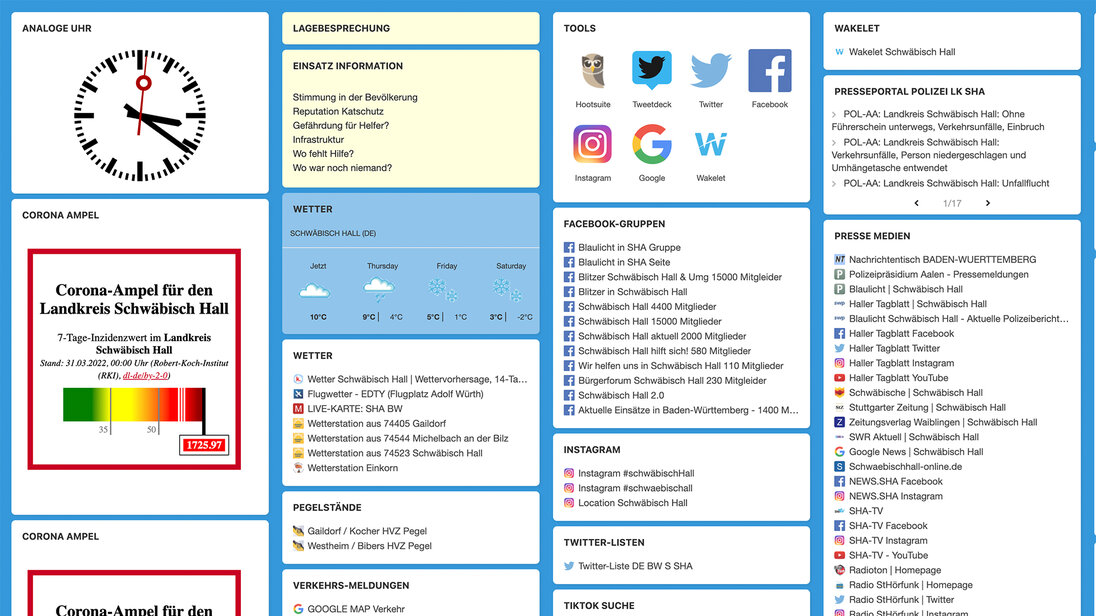
The VOSTbw is a group of social media experts. In addition to fire service members, it also includes members of the emergency medical services, including search services, the THW (federal technical relief) and the DLRG (water rescue). The team works decentrally and provides information for command work on the current situation and for media monitoring. Fire services can request support during major incidents.
One example of an operation that made the possibilities of location-independent support particularly clear was the flooding of the Ahr river last year. The extent of this monitoring can be seen in the following figures: In shift work, 25 personnel were on duty for 2 277 hours over seven weeks and delivered 34 reports.
Exploiting the potential of mobile ventilation units
Bernhard Achermann, former fire chief of the Stans (CH) fire service, focused on how fire services can make greater use of the potential of mobile ventilation units in the field. He distinguished between offensive ventilation, where the airflow is used to stabilise or improve visibility for firefighters, and defensive ventilation, to prevent the spread of smoke and hot fire gases.
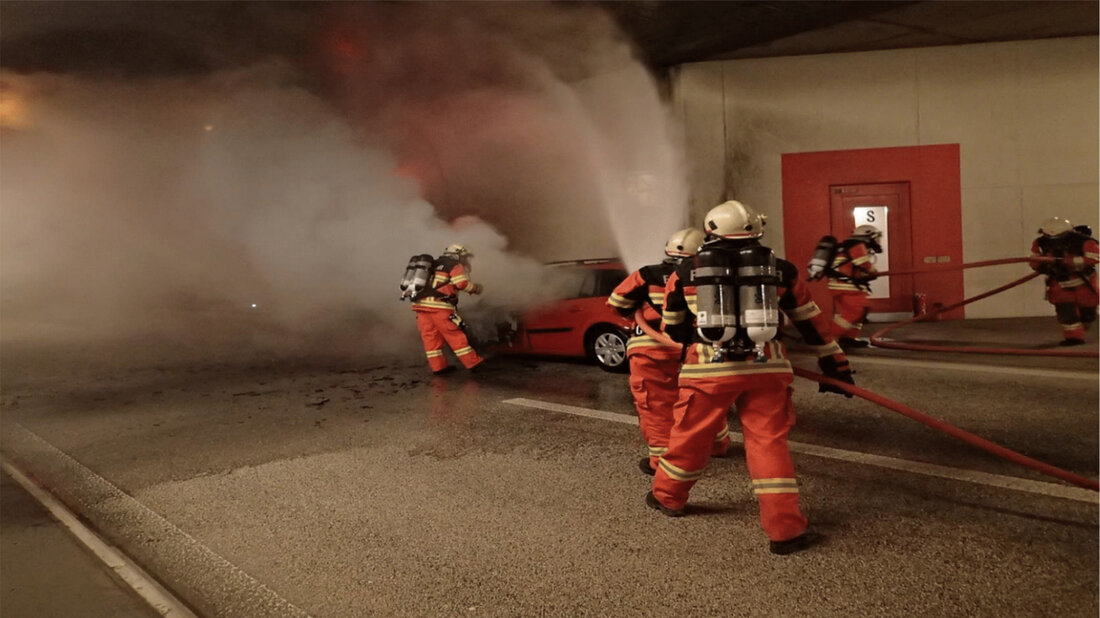
Achermann's experience: Mobile ventilation unit (MVU) can be used effectively in a wide variety of incidents. For examples, he mentioned, among other things, the support of smoke extraction during firefighting operations in the tunnel, smoke removal during fires of the technical tunnel infrastructure or a cross-passage, as well as ventilation during fires in underground parking garages. However, Achermann also sees great potential for protecting neighbouring buildings in the event of fires, warehouse incidents, and chemical accidents, such as the precipitation of gases and vapours.
Making the transport system safer
Christoph Schneider, Tunnel Safety Specialist from the Federal Office of Transport (CH), summed up his thesis on rail incidents in one sentence: «Very little happens, but something will happen.» He underlined this statement about rail traffic in Switzerland with statistical data. In fire incidents in railway tunnels between 2009 and 2021, there was property damage of around CHF 300 000. Eight vehicle fires and four infrastructure fires during the study period mean an average of one fire incident in railway tunnels per year.
In order to make the «overall transport system» safe, Christoph Schneider recommended early cooperation «at all levels, if possible before the approval process» so that the most diverse perspectives can be taken into account. With this statement, he backed up a recommendation by the International Fire Academy to involve fire services in tunnel projects at an early stage. In addition to training, local area knowledge and practice on-site, Schneider also counted the exchange of experience among his expectations of the fire services. The Fire Chief Forum wants to continue to contribute to this - in future, if possible, on an annual basis again.



